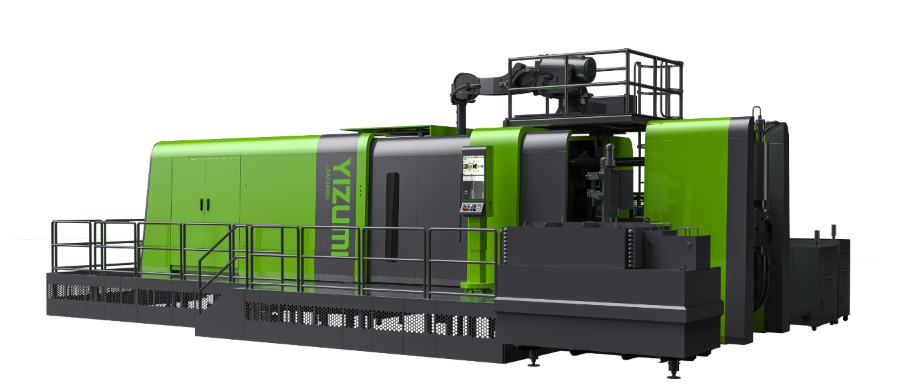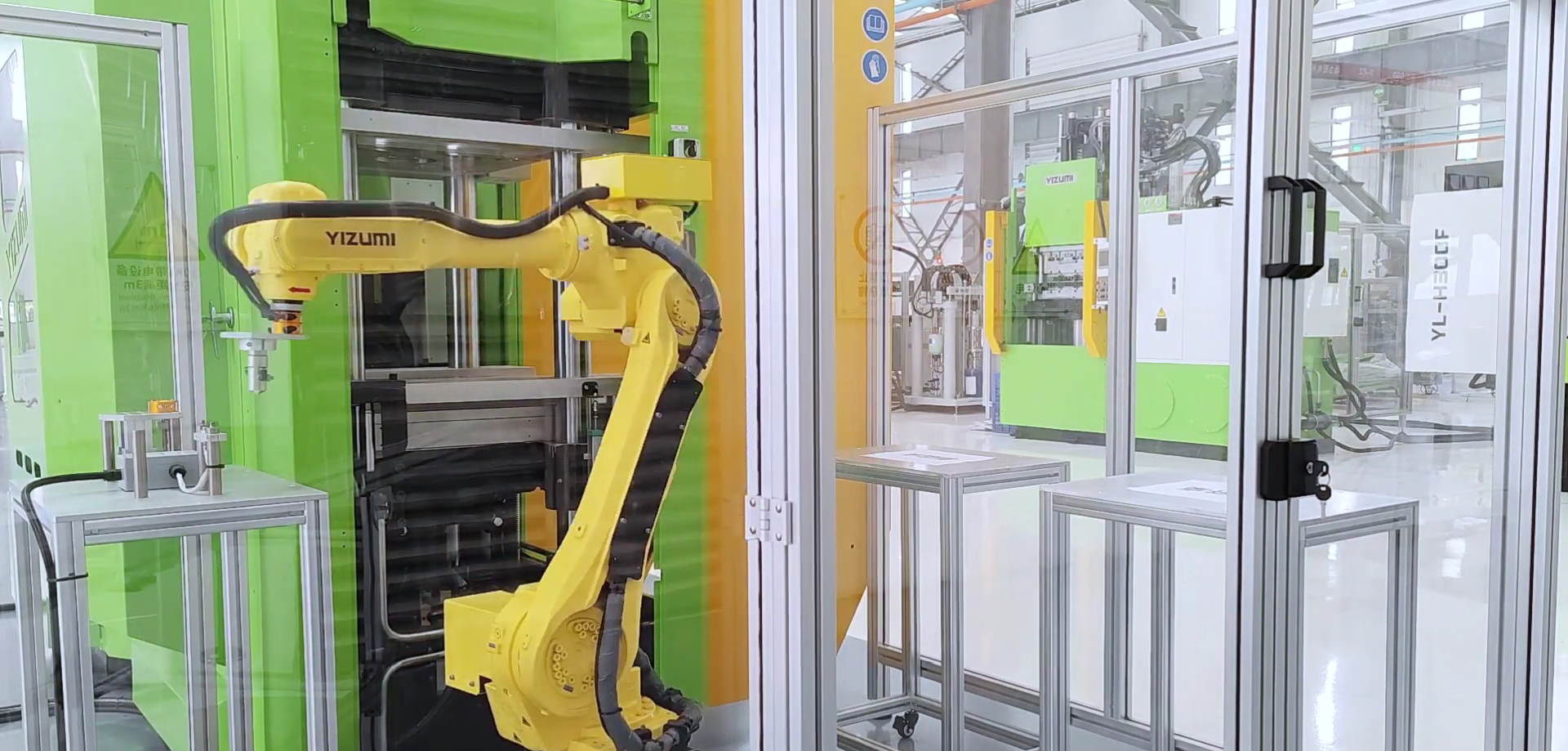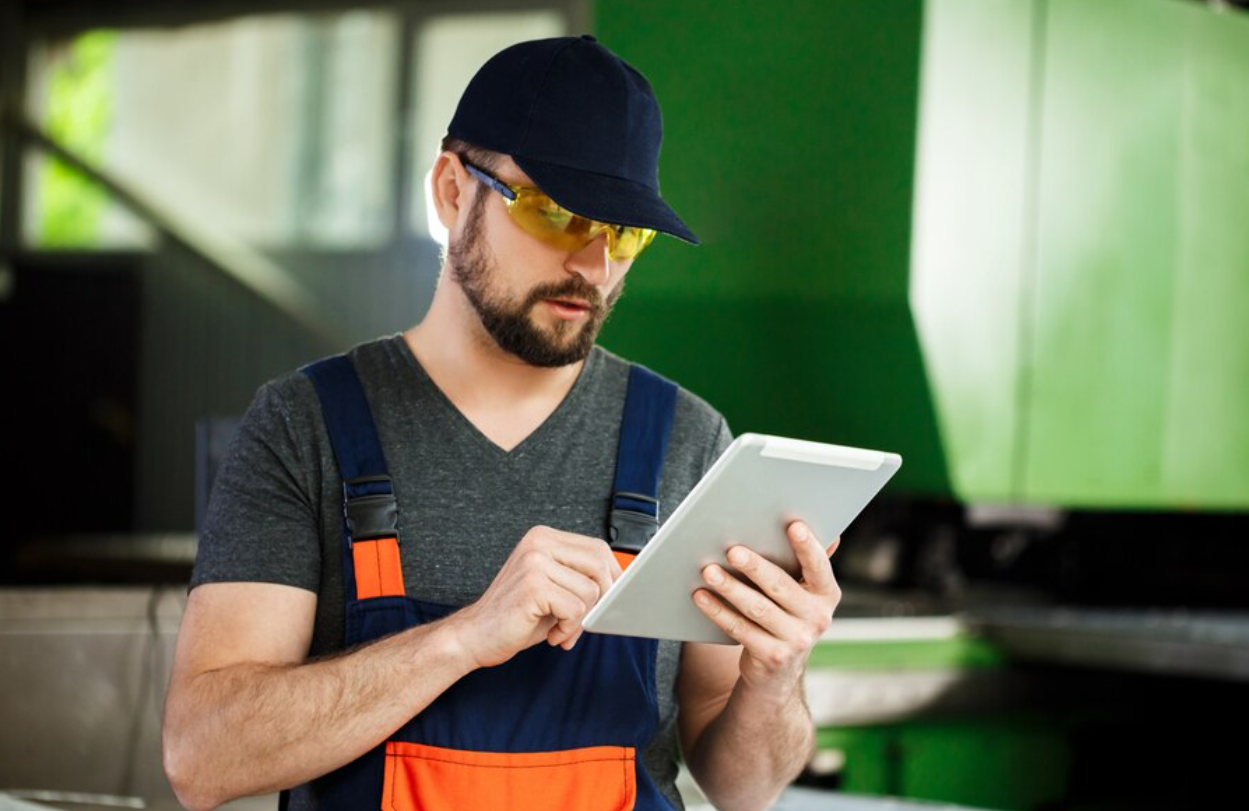Comparing the Benefits and Challenges of Die Casting and Injection Molding
Abstract:
In manufacturing, selecting the right production method can make a significant difference in product quality, cost efficiency, and performance. Two widely used methods—die casting and injection molding—offer distinct advantages depending on the application and materials involved.
In manufacturing, selecting the right production method can make a significant difference in product quality, cost efficiency, and performance. Two widely used methods—die casting and injection molding—offer distinct advantages depending on the application and materials involved. In this article, we'll explore the key differences between these processes, discuss their applications, and highlight the cutting-edge solutions offered by YIZUMI's LEAP Series Die Casting Machine and W1 Series Injection Molding Machine for Deep-Cavity Products.

What is Die Casting?
Die casting is a high-pressure manufacturing process used to shape metals like aluminum, zinc, and magnesium into complex geometries. This method is favored for its ability to produce durable, high-precision components with smooth surface finishes.

At YIZUMI, our LEAP Series Die Casting Machine represents the pinnacle of die-casting technology. The machine is equipped with the Yi-Cast real-time closed-loop injection system, which ensures each injection is precise and repeatable. Its innovative servo-pump units and intuitive ORCA control system enhance energy efficiency, improve accuracy, and streamline operations, making it a standout solution for manufacturers.
What is Injection Molding?
Injection molding is a highly versatile and widely used manufacturing process, particularly suited for shaping a wide range of plastics and thermoplastics. In this method, molten plastic is first heated until it becomes a thick, fluid-like consistency. The molten plastic is then injected into a mold cavity under high pressure, where it fills the cavity and takes the form of the mold's intricate design. Once the plastic has been injected, the mold is cooled, causing the material to solidify and take on its final shape. After cooling, the mold opens, and the solidified part is ejected. This method is especially efficient for producing parts in high volumes with exceptional precision.
Injection molding is especially well-suited for creating lightweight yet durable parts, ranging from simple items to highly complex designs. The ability to mold intricate shapes, including detailed textures and thin walls, makes it a go-to process for industries like automotive, medical devices, electronics, and consumer goods. The process also offers high repeatability, making it ideal for large-scale production runs where uniformity and consistency are key. Additionally, injection molding can accommodate a variety of plastic materials, including thermoplastics, thermosets, and elastomers, offering flexibility in material selection depending on the desired strength, flexibility, and thermal properties of the final product. The result is a fast, efficient, and cost-effective process that can produce high-quality components with minimal waste.
YIZUMI's W1 Series Injection Molding Machine is specially designed for deep-cavity products, such as trash cans, plastic drums, and stools. With a larger-than-average opening stroke, high-speed operation, and energy-saving servo technology, the W1 Series is engineered to meet the most demanding requirements while ensuring stability and efficiency.
Advantages of Die Casting
The advantages of die casting make it a preferred choice for applications requiring strength, precision, and durability:
1. Dimensional Accuracy: Die casting achieves tighter tolerances than most other processes, ensuring precise components.
2. Surface Quality: The smooth surface finish reduces or eliminates the need for additional machining.
3. Material Efficiency: Minimal material waste during the process, making it cost-effective for high-volume production.
4. Durability: Die-cast components exhibit excellent mechanical properties and thermal stability.
With YIZUMI's LEAP Series Die Casting Machine, these advantages are further amplified. The machine's Yi-Cast injection system ensures quality assurance, while its energy-efficient design offers up to 40% energy savings.
Applications of Die Casting
Die casting finds extensive applications across industries:
· Automotive: Engine blocks, transmission housings, and structural parts.
· Electronics: Precision housings for devices and heat sinks.
· Industrial Equipment: Durable parts for heavy machinery and tools.
YIZUMI's LEAP Series is specifically designed to excel in these applications, offering enhanced performance and reliability.
Advantages of Injection Molding
Injection molding offers unique advantages, particularly when working with plastics:
1. Versatility: The process supports a wide range of materials and designs.
2. Cost-Effective for Plastics: Suitable for lightweight, complex components at a lower material cost.
3. High Efficiency: Fast cycle times and scalability for high-volume production.
4. Adaptability: Compatible with advanced processes like in-mold labeling and robotic integration.

The W1 Series Injection Molding Machine maximizes these benefits. Its third-generation servo system and upgraded KEBA control system enable precise control, stable performance, and significant energy savings.
Die Casting vs. Injection Molding: Key Differences
| Feature | Die Casting | Injection Molding |
| Materials Used | Metals (aluminum, zinc, magnesium) | Plastics (ABS, polypropylene, nylon) |
| Applications | Automotive, aerospace, industrial equipment | Packaging, consumer goods, medical devices |
| Strength and Durability | High mechanical strength and thermal resistance | Lightweight and durable, but less strong than die-cast components |
| Surface Finish | Superior surface quality suitable for finishing or direct use | Smooth surfaces but may require post-processing for certain applications |
| Cost Considerations | Higher initial mold cost but cost-effective for large-scale metal part production | Lower mold cost but potentially higher material costs for plastics |
YIZUMI: Bridging the Gap
At YIZUMI, we pride ourselves on offering comprehensive solutions for both die casting and injection molding applications.
LEAP Series Die Casting Machine
· Real-Time Precision: The Yi-Cast system ensures consistent quality with minimal user adjustments.
· Energy Savings: The servo-pump units save up to 40% energy, enhancing operational efficiency.
· User-Friendly: The ORCA control system simplifies operations through a 24-inch touch panel interface.
W1 Series Injection Molding Machine
· Deep-Cavity Specialization: Ideal for products requiring large opening strokes.
· Stability and Speed: Optimized toggle configuration enables high-speed and stable operation.
· Advanced Control: The KEBA system ensures precise management of pressure, temperature, and flow.
Our expertise in rubber, die casting, and injection molding technologies allows us to provide end-to-end solutions for a wide range of manufacturing needs.
Applications and Synergies
Both die casting and injection molding are invaluable for manufacturers across industries. While die casting is indispensable for high-strength metal parts, injection molding dominates in lightweight, complex plastic products. With YIZUMI's advanced equipment, manufacturers can seamlessly integrate both processes, ensuring optimal results in die casting and injection molding applications.
Conclusion
Choosing between die casting and injection molding depends on factors like material, application, and production scale. YIZUMI bridges these two worlds with innovative technologies like the LEAP Series Die Casting Machine and W1 Series Injection Molding Machine, delivering unmatched precision, efficiency, and reliability. Whether you prioritize the advantages of die casting or the versatility of injection molding, we are here to empower your manufacturing success.





